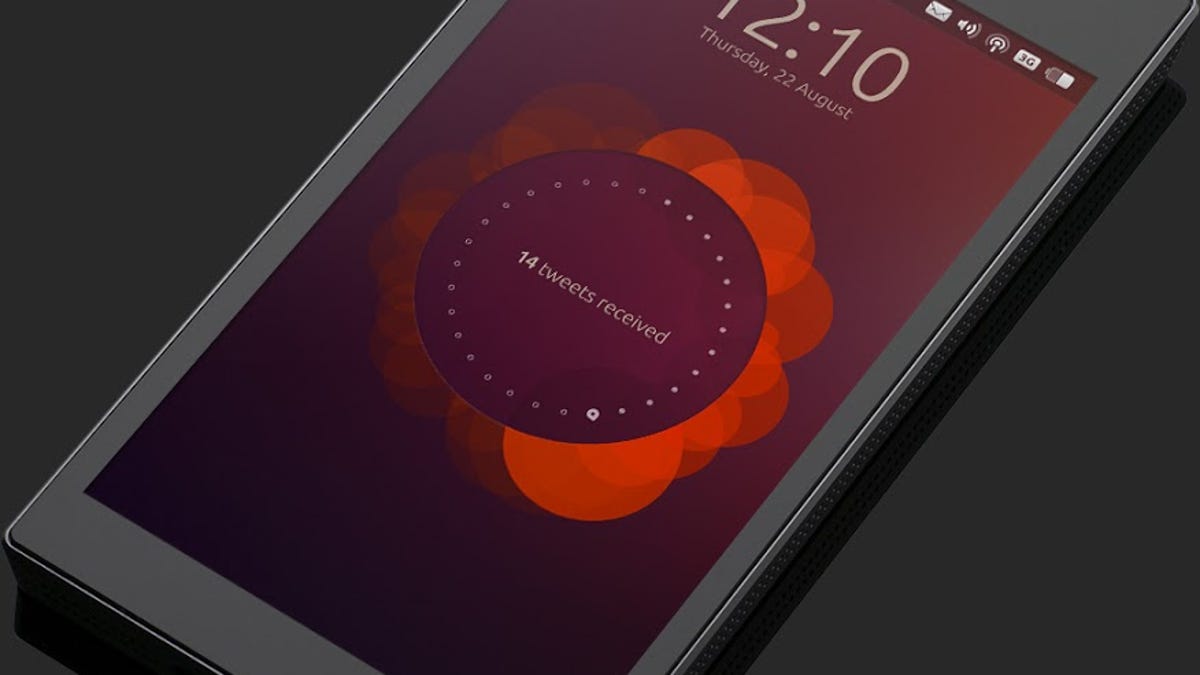Ubuntu Edge dual-boots Android, seeks $32M
The Ubuntu Edge runs both Android and open-source Ubuntu Touch software -- and the people behind it want your help to the tune of $32 million on Indiegogo.

If you're not living on the edge, you're taking up too much room. Say hello to the Ubuntu Edge, the first smartphone to use open-source Ubuntu Touch software as well as Android -- and the people behind it want your help with a multimillion-dollar crowdfunding campaign.
Ubuntu creator British company Canonical wants to bring the dual-booting Edge to fruition by raising a whopping 21.5 million pounds ($32 million) in a month on Indiegogo. It claims this is the biggest target ever for a crowdfunded campaign. The campaign intends to produce 40,000 units; if you want to own an Edge of your very own, you'll get a handset if you pledge 394 pounds ($600) today, or 532 pounds ($830) thereafter.
You will have to wait until May 2014 to actually get your hands on the Edge, however.
If the Edge raises the money, Canonical will be "delighted" and could repeat the experiment as "a regular thing." But if it doesn't raise the ambitious full amount before August 21, the Edge won't happen at all, and Canonical will merrily continue to develop Ubuntu mobile software for carriers and manufacturers to add to their own phones.
Canonical says it's adopted crowdfunding to see which technologies early adopters are interested in paying for, without a manufacturer having to spend millions on developing a product that then proves to be a flop. The company highlights the Edge's battery and scratch-proof screen as technologies that would be adopted more widely if they could be proved by this project to be the sort of things people want from their phones. But Canonical insists this is not a full move into the phone hardware market.
The Edge promises "the latest, fastest processor," with at least 4GB of RAM and 128GB of storage. It has a 4.5-inch, 720p screen covered in pure sapphire crystal, which Canonical claims to be "the hardest natural substance after diamond."
Although elements of the design and specs are still open -- possibly with input from phone fans who have backed the phone -- the Edge is also planned to include 4G, NFC, and Bluetooth 4.0. It's designed to hook up to a computer or a monitor via HDMI cable so you can use it just like the desktop Ubuntu operating system. Although it sounds similar to the Motorola Atrix, Canonical insists the Edge will be much more powerful and will give a much more desktop-like performance.
Revealed in slick rendered images, the Ubuntu Edge runs the version of open-source operating system Ubuntu designed for touch-screen gestures on phones and tablets.
The Edge is a starkly-designed slab of charcoal black, its distinctive feature being a sharp-angled edge down one side and along the top. There's what appears to be a power button at the top and two volume keys on one side, linked by twin rows of small dimples running around the edge of the phone. A wide button at the top appears to be the SIM card cover.
There's a camera and flash in the top corner. The rear is completely smooth, with an Ubuntu Edge logo subtly shaded in the same dark tone.
Ubuntu Touch open source software
The front of the phone has no home button: just the touch screen showing off Ubuntu Touch software. Ubuntu Touch is controlled by swiping in from outside the screen, different options appearing depending on which edge you move your finger across.
Swipe in from the left and a sidebar of shortcuts appears. Swipe in from the right and you scroll through the apps you have running. Swipe down from the top for messages and notifications, or pull up from the bottom for settings and preferences, unique to the app you're in.
Ubuntu Touch made its first appearance running on Google Nexus 4 phone and Nexus 7 tablet earlier this year, so this is the first time it's appearing on purpose-built hardware.
Ubuntu Touch was our pick of the most exciting new technology at annual mobile industry extravaganza Mobile World Conference, its elegant interface and slick design cruising past the clunky Tizen and Firefox OS to become the most impressive potential low-cost rival to Android.

